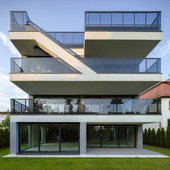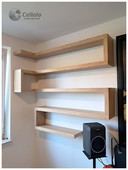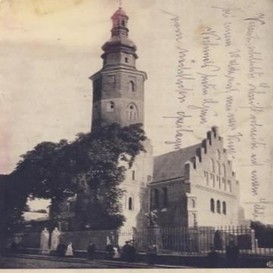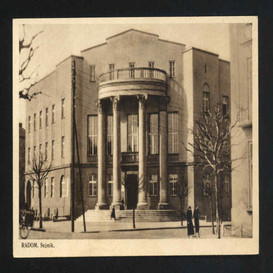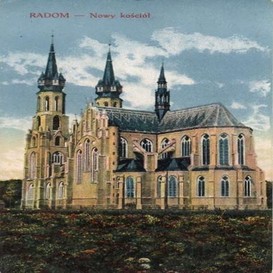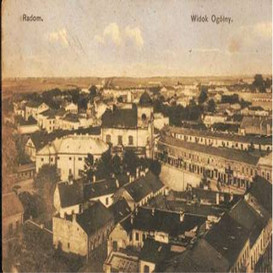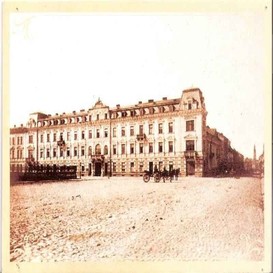Basel Pavilion of culture

Basel is the third largest city in Switzerland. With approximately 175,000 inhabitants, it has become internationally known and earnt its place amongst Europe’s great cities whilst remaining relatively cosy, quiet and small. It has the privilege of sitting on the border of three countries; Switzerland (to which it belongs), France and Germany and being the last navigable port on the Rhine.
Quite possibly, the first thing that comes to mind when we think about Switzerland is the precision of its watches, its controversial banking system or its chocolate. But Switzerland also possesses a great cultural and artistic heritage that shouldn’t be overlooked.
During the Middle Ages, Switzerland forged a great artistic tradition in the field of religious art - and it hung onto it for centuries. Then in the beginning of the 20th century there was a turnaround and Switzerland became the worldwide capital of design. Designers such as Josh Krlos, Théo Ballmer and Max Bill led an aesthetic movement that went on to have a huge influence in the graphic design (known as ‘International’ or ‘Swiss Style’) that we now see on a daily basis. Who doesn’t know the Bauhaus posters or hasn’t used, at least once, the Helvetica font?
But it wasn’t just graphic design. In painting, we find illustrious names such as Alberto Giacometti, Angelica Kaufmann and Paul Klee, and in architecture Mario Botta, Herzog & De Meuron, Bernard Tschumi, Peter Zumthor and Le Corbusier, just to name a few. These prodigious Swiss sons and daughters got us thinking that without Switzerland - its art and all its expressive forms – modernity, as we know it, probably wouldn’t exist.
The robust and stable Swiss financial system, together with this artistic richness, has bestowed the country with a great number of private art collections of incalculable value.
Over the years, many of these private collections have been opening up to the public. When counted together with the city’s public museums, Basel is the European city with the greatest density of museums, with over 36 exhibition spaces spread out over barely 3 square kilometres.
The city’s cultural offering is nothing short of incredible and logically it attracts a great number of tourists. That said, many of them feel a little lost and lack direction on where exactly to go to appease their artistic appetite.
CHALLENGE
The city is very aware of its cultural potential and has various tourist offices. That said, many visitors come to Basel to see it’s art alone and don’t want a traditional tourist service that will tell them where to sleep, where to eat and what to visit. The visitor that comes to Basel to view its art is culturally well educated and won’t be satisfied with just seeing the main collections. They are not your ‘typical’ tourist – they want to dig deeper and avoid clichés.
With this in mind, the directors of Basel’s museums and private collections have decided to get together and invest in the Basel Pavilion of Culture. The pavilion will act as information point for these ‘art tourists’, where they will be able to find out about what’s on offer and organise their visits accordingly. They will also be able to buy multiple passes to the venues amongst other services designed to streamline their experience.
Therefore the Basel Pavilion of Culture will not just be a mere information point, but an experience within itself. The space will allow be able to host cultural events such as receptions, talks and small exhibitions among others.
The Basel Pavilion of Culture will therefore be a tool that saves time, money, and makes the visitors’ trip more fulfilling. For the museums themselves, the pavilion means elevating the number of satisfied visitors (given that each one will be directed to the collection he/she is really interested in) and also a place of consolidation, not only within Basel itself, but also inside the global art world.
THE SITE
The site chosen for the project is in the centre of the city and is surrounded by major museums and other points of interest such as the Barfüsserplatz, the cathedral and the Rhine’s riverbank. Precisely it’s on Steinberg Strasse in front of the Theatre of Basel.
The chosen plot is small, but that doesn’t make it any less complex. It has access via the two streets that surround it, as well as an underground passage that runs underneath Steinberg Strasse. At the same time, various levels exist in the surrounding streets and in the platforms that give access to the theatre.
Access to the Theatre of Basel must be considered, as well as the Tinguely fountain and the sculpture by Richard Serra (amongst other things) in order to conform to the pre-established urban character.



